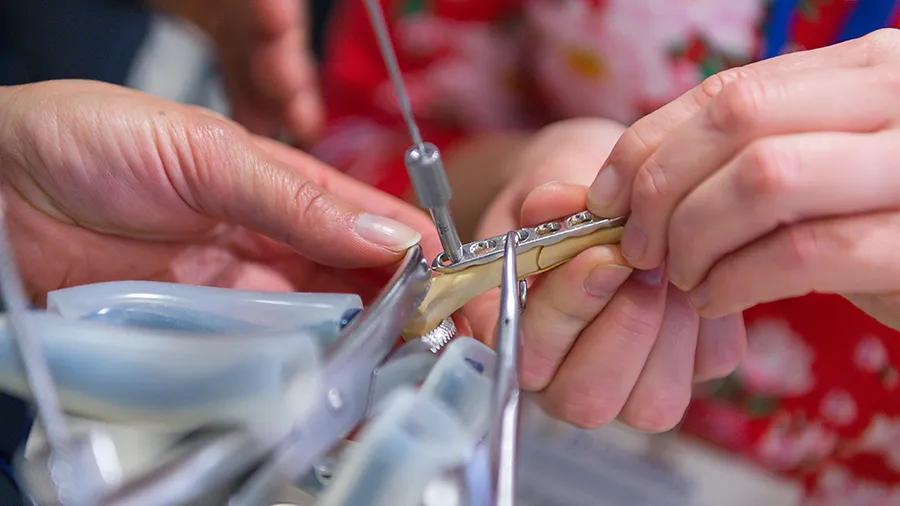Plate fixation (ventrally)
1. Principles/General considerations
Fractures of C2 (Axis) can occur in the axial dens (a) or the axial body (b), with or without involvement of the spinal canal.
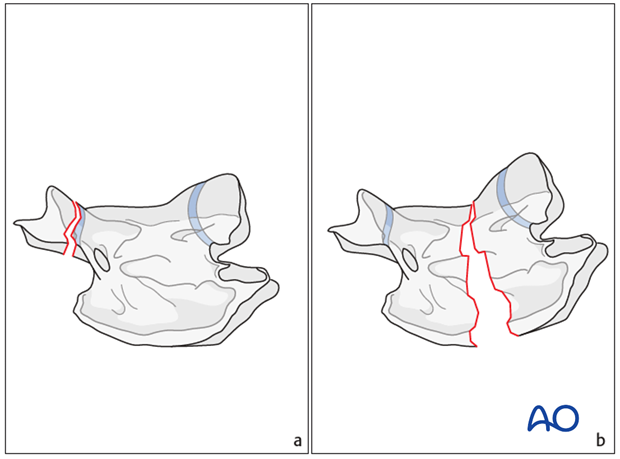
Axial body
Fractures of the axial body are stabilized with plates. The goal of surgery is to provide decompression at the fracture site by realigning the vertebrae and providing stability with some form of fixation.
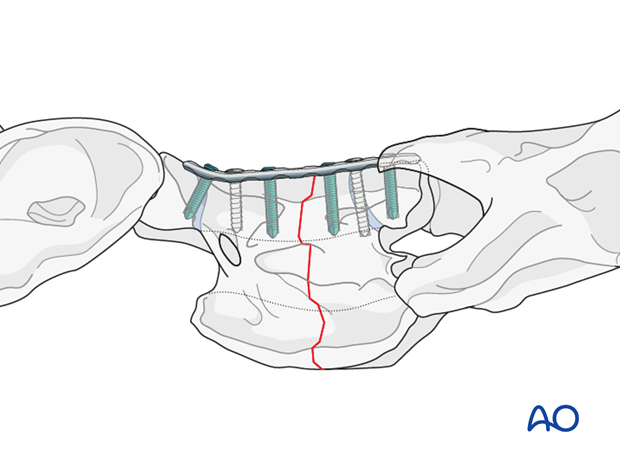
2. Preparation and approach
This procedure is performed with the patient positioned in dorsal recumbency through the ventral midline approach to the cervical spine.
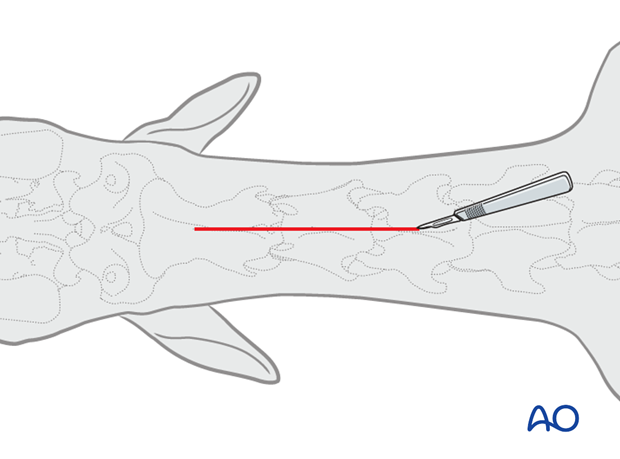
3. Reduction
Preparation of the bone
The ventral spinous process of the body of C2 is flattened slightly using a curved osteotome and bone rongeur.
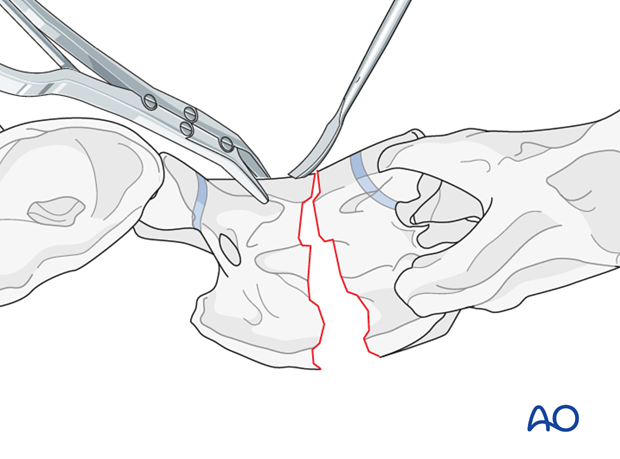
After exposing the ventral surfaces of the atlas and axis, the alignment of the vertebrae is corrected and maintained with bone-holding forceps.
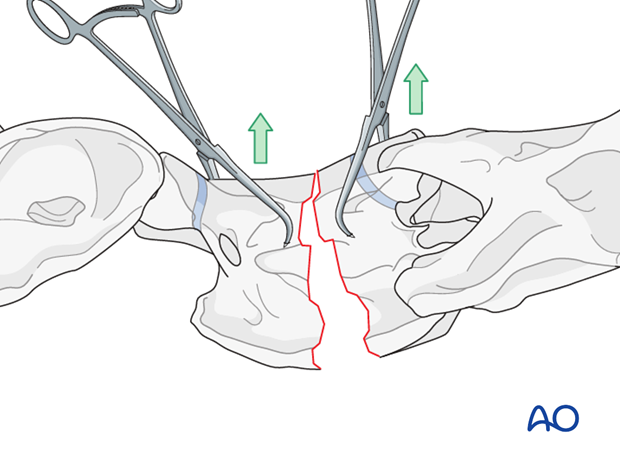
4. Fixation
Plate selection
The use of the locking compression plate (LCP) is preferred for fracture fixation of the vertebrae. According to the size of the patient, a small or broad 3.5/4.0 or 4.5/5.0mm LCP are used.
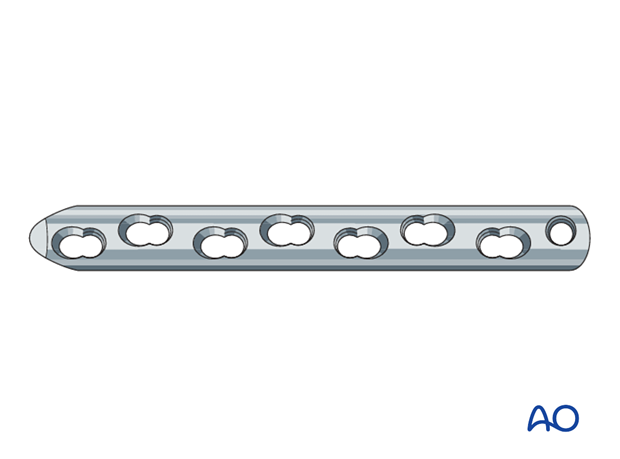
Plate preparation
Plate contouring is needed to fit the anatomical shape of the vertebra.
Accurate contouring of locking compression plates is not necessary, but it improves the closure of the soft tissue over the plate.
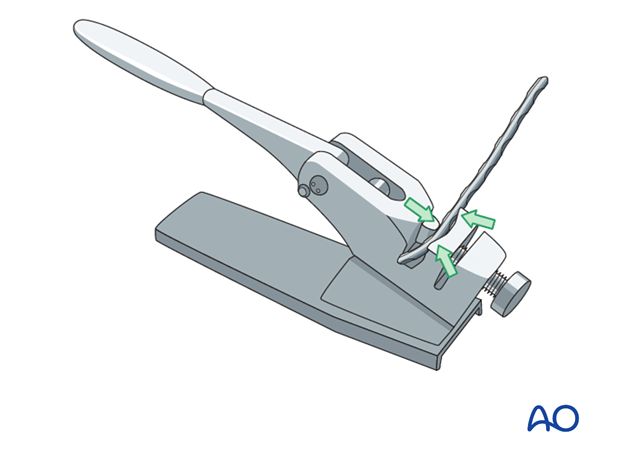
Plate application
With the reduction forceps in position, the appropriately sized plate is applied on the ventral aspect of C2.
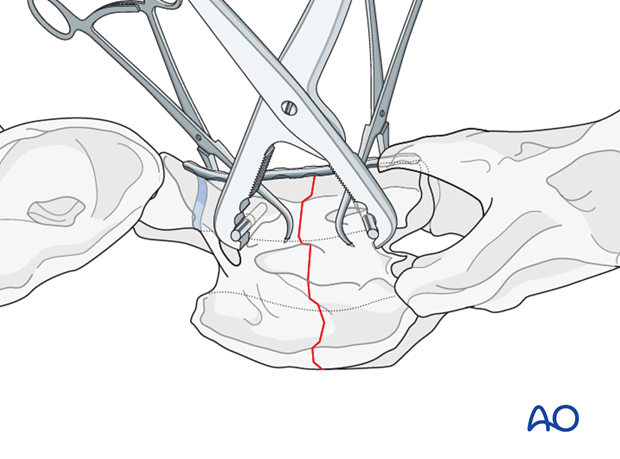
One cortex screw is inserted into each fragment in load fashion. The correct length of the screws is determined with the help of fluoroscopy.
Note: Attention must be paid not to damage the spinal cord.
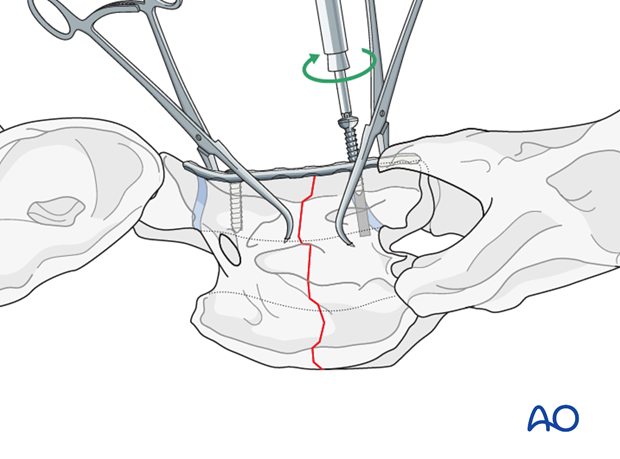
The remaining holes are filled with locking-head screws.
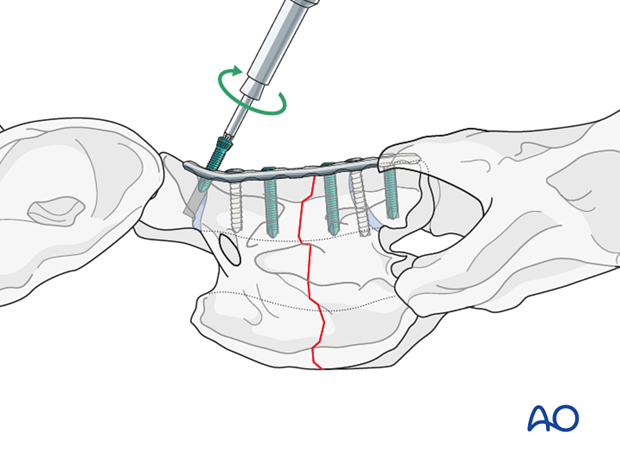
5. Closure
The muscles, subcutaneous tissue and the skin are closed in a continuous fashion. A close active drain can be placed at the level of the plate, exiting the skin near the incision and sutured to the skin.
A stent bandage is applied, and covered with an adhesive barrier drape to keep the incision clean and dry during recovery.
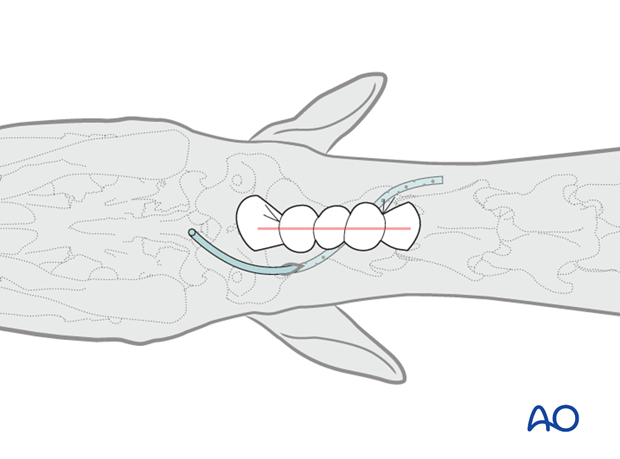
6. Aftercare
Following surgery, antibiotics and NSAIDs are routinely administered for 3 days. If indicated, they need to be continued.
Routinely follow up radiographs are taken immediately after surgery and after 2 and 4 months.
The rehabilitation protocol includes 2 months of stall confinement, followed by 1 month of hand-walking, and 2 months of progressive exercise.
Only when the ataxia has completely disappeared, the horse can return to training or other activities.
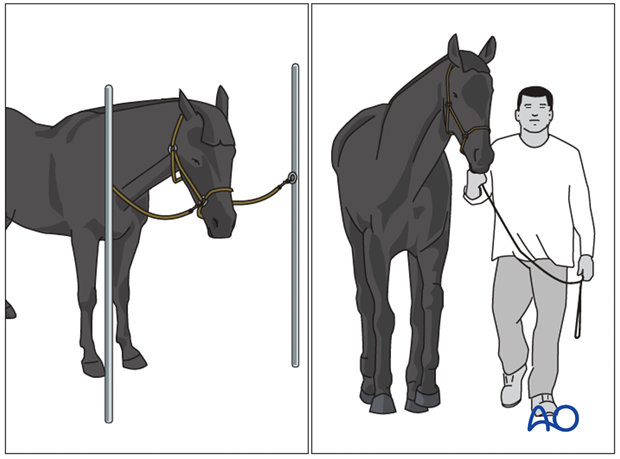
Implant removal
There is no need for implant removal, except in cases of implant loosening or surgical site infection.
